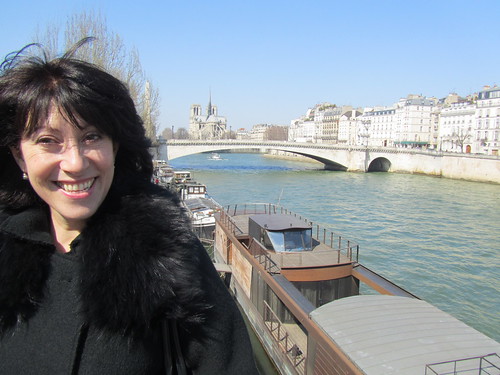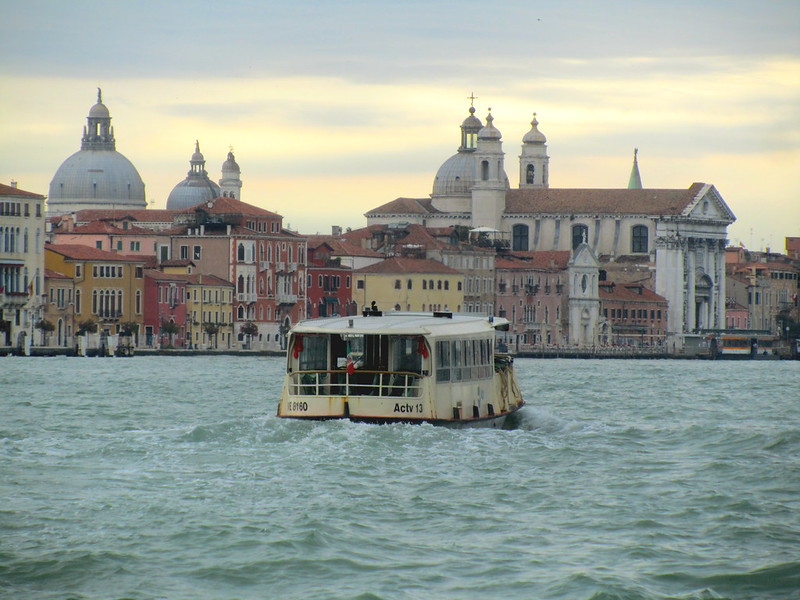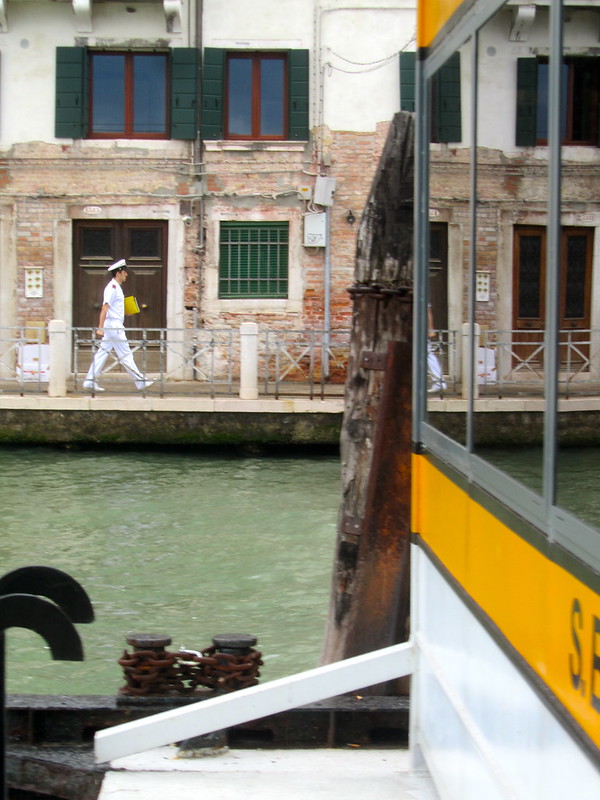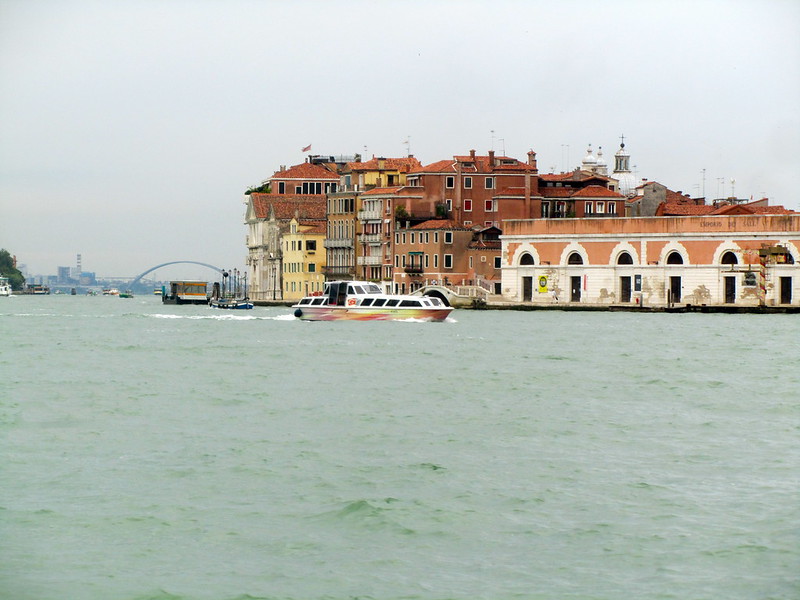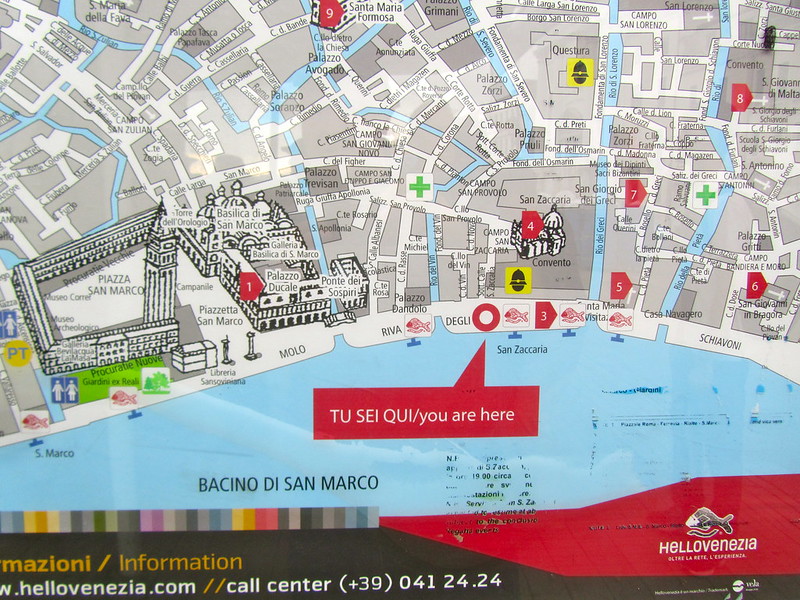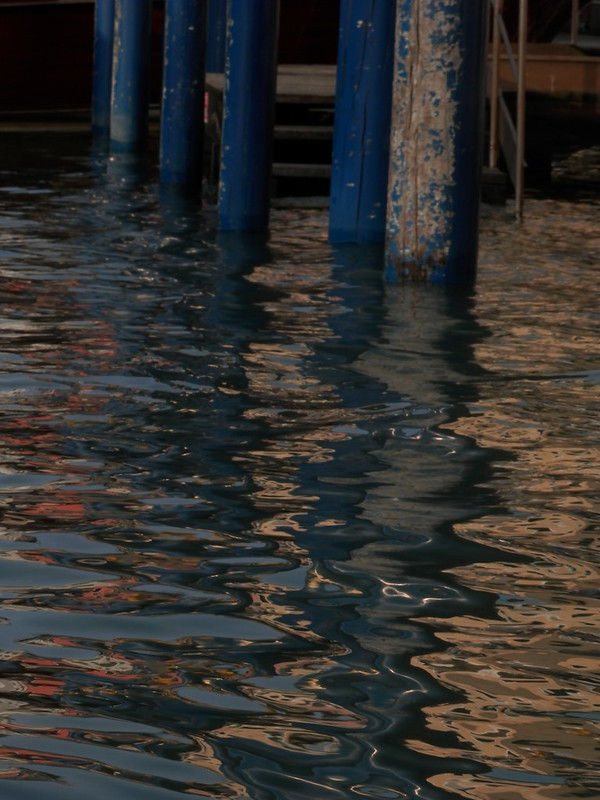
jueves, 31 de julio de 2014
A Media History of Documents
The Story behind any Story - The Paris lecture
The Story behind any
Story:
The Paris Lecture
Reference Info: Lecture at the 3rd Conference of the European Narratology Network, Université Internationale de Paris, 28-30 March 2013This paper/lecture is now online at the SSRN, and has been accepted by a number of thematic journals (Date posted: August 02, 2014).
http://papers.ssrn.com/abstract=2474591
| eJournal Classifications |
| AARN Subject Matter eJournals |
| AARN Subject Matter eJournals |
| CSN Subject Matter eJournals
Cognition & Culture:
Culture, Communication, Design, Ethics, Morality, Religion, Rhetoric,
& Semiotics eJournal -
CMBO
|
| CSN Subject Matter eJournals |
| CSN Subject Matter eJournals |
| CSN Subject Matter eJournals |
| CSN Subject Matter eJournals |
| PRN Subject Matter eJournals |
Here a couple of videos from the CRAL's channel, with my lecture at the Université Internationale de Paris.
A longer paper based on the lecture will be published by the Amsterdam International Journal of Cultural Narratology some time this year.
miércoles, 30 de julio de 2014
Se te olvida
seteolvida from Jose Angel García Landa on Vimeo.
Se me olvida, más bien, en pasiva refleja.
Reacciones a la corrupción de los Pujol
Y aquí Jesús Cacho sobre la necesidad de refundar la sociedad catalana: la cataluña sumisa, delirante y encerrada en sí misma, atontada y corrompida por el nacionalismo.
martes, 29 de julio de 2014
lunes, 28 de julio de 2014
Interaction as reality-maintenance
The social reality we inhabit must be constantly constructed and reconstructed and reproduced through socialization. Berger & Luckmann differentiate the primary socialization acquired in childhood, which gives the individual a social identity, and secondary socialization, e.g. education, professional training, etc., which gives the individual a number of roles in society, a profession or provisional identity which may be more or less fluid or permanent according to circumstances and social complexity.
The social reality is a system of institutions, externally speaking, but they must be interiorized by the individual to become a subjective reality—through a number of techniques. "The more these techniques make subjectively plausible a continuity between the original and the new elements of knoweldge, the more readily they acquire the accent of reality" (163); just as we build a second language knowledge on our mother tongue, we build secondary socializations on our primary socialization. In complex societies there is a socializing personnel (e.g. teachers) who may become significant others to the subject—especially if the secondary socialization requires intensity and dedication, a commitment of the self-identity so to speak. Socializing tasks vary much from one society to another, just as the distribution of knowledge.
Maintenance and Transformation of Subjective Reality.
"Since socialization is never complete and the contents it internalizes face continuing threats to their subjective reality, every viable society must develop procedures of reality-maintenance to safeguard a measure of symmetry between objective and subjective reality" (167)
"Primary socialization internalizes a reality apprehended as inevitable. This internalization may be deemed successful if the sense of inevitability is present most of the time, at least while the individual is active in the world of everyday life". There are the sinister psychological metamorphoses of reality threatening it, usually marginally; mental distortions of reality which must be kept under control in the individual's subjectivity. "There are also the more directly threatening competing definitions of reality that may be encountered socially" (167)—people living with other cultural assumptions, in another reality so to speak.
If a secondary socialization is to be strongly internalized, the socialization procedures (discipline, control, etc.) will have to be intensified and reinforced accordingly. (E.g. the military, the clergy...);
"the reality of everyday life maintains itself by being embodied in routines, which is the essence of institutionalization. Beyond this, howerver, the reality of everyday life is ongoingly reaffirmed in the individual's interaction with others. Just as reality is originally internalized by a social process, so it is maintained in consciousness by social processes. These latter processes are not drastically different from those of the earlier internalization. They also reflect the basic fact that subjective reality must stand in a relationship with an objective reality that is socially defined" (169).
So, reality (the human reality of individuals, projects, actions, institutions, customs, etc.) is made and remade through interaction—this much Berger & Luckmann share with other propounders of symbolic interactionism. Reality is made (to put it otherwise) of a collectively sustained set of self-fulfilling expectations.
Due to their interactionalist account of socialization, Berger and Luckmann are ideally placed as major theorizers of what I used to call the relational self—the notion that the self is not a substance with a stable core but rather a dynamic system of social relationships—a structure defined by its position in a social network. We do not have social relationships; we are our social relationships, so to speak (if this does not account for the whole of the reality of the self it does place a useful focus on a side of the self that is usually neglected or ignored). Each of the people we meet has a corresponding relational reality, and brings to ours a partially alien world which partly defines ours. We inhabit, or construct, a differen reality (partly different, provisional, interactional) with each of the people we interact with. Especially with the most significant persons.
Significant people define your reality with you, and you define theirs. Which is why many communities don't find it advisable for their members to have significant relationships (marriage, love, friendship) with members of other communities holding different beliefs—inhabiting another reality, so to speak. A foreigner's look threatens the very core of reality, it is an intrusion from another dimension. "There is no salvation outside the Church" —a doctrinal point which is given a more general, and rather ironic, reading, by Berger and Luckmann. Individuals may inhabit a fairly consistent reality, or experience tensions between different realities which assert their claims. "The individual then faces a problem of consistency, which he can, typically, solve either by modifying his reality or his reality-maintaining relationships" (170). E.g. accepting that one is a failure, or turning to other people that give back a more satisfying image of oneself and our activities. Human realities only partially overlap, and that there is often a conflict of realities among diverse social groups; see e.g. my paper on the battle for reality between the Gnostics and the early Christians, as portrayed in The Gospel of Judas ("La Visión del Templo: Espiritualidad antieclesiástica en el Evangelio de Judas y la Batalla por la Realidad"). There is a whole job of reality-management and reality-maintenance, especially in a globalized world in which different communities and different realities run into chaotic and absurd juxtapositions with each other:
"Reality-maintenance and reality-confirmation thus involve the totality of the individual's social situation, though the significant others occupy a privileged position in these processes" (Berger and Luckmann 171).
A continual interaction with significant others is thus the major vehicle for reality-management and reality maintenance. Conversation is singled out by Berger and Luckmann as the major mode of interaction (though love-making or sports can arguably be just as effective in many cases):
"The most important vehicle of reality-maintenance is conversation. One may view the individual's everyday life in terms of the working away of a conversational apparatus that ongoingly maintains, modifies, and reconstructs his subjective reality" (172)—conversation surrounded by non-verbal communication, and taking place "against the background of a world that is silently taken for granted" (172). One could thus modify Berger and Luckmann's account by saying that it is shared expectations or presuppositions (on which conversation rests, and which conversation helps to manage or modify) that constitute the most important tool of reality maintenance. Reality sustained by mental communication, then, of which actions and words only minimally modify the surface. Casual conversation is then a crucial sign that the world stands in its place and is what it is; "its massivity is achieved by the accumulation and consistency of casual conversation—conversation that can afford to be casual precisely because it refers to the routines of a taken-for-granted world. The loss of casualness signals a break in the routines and, at least potentially, a threat to the taken-for-granted reality" (172). What is voiced out is singled out for attention; "conversation gives firm contours to items previously apprehended in a fleeing and unclear manner. One may have doubts about one's religion; these doubts become real in a quite different way as one discusses them." (173).
Conversations must be managed—Berger & Luckmann mention conversations through correspondence when physical conversations are not possible. "On the whole, frequency of conversation enhances its reality-generating potency, but lack of frequency can sometimes be compensated for by the intensity of the conversation when it does take place. One may see one's lover only once a month, but the conversation then engaged in is of sufficient intensity to meke up for its relative infrequency" (174).
One might as well note, too, the importance of reading as world-making conversation, reading (literature, philosophy, science, etc.), interacting with the dead, or with communities and worlds far away in time or space, sometimes to find a loophole to gaze out of the reality defined and circumscribed by our everyday life and by the conversation of our significant others, or, again, turning people living long ago and far away into our significant others. One might also expand on the prominent role of telephones and communication technologies in the present, as reality-management and reality-producing media.
Thus individuals manage their identities and realities, even when they are cut off from daily conversation with their reality-sustaining community. Rituals may be engaged in to keep this contact and prop up this reality. The "plausibility structures" as they are termed by Berger & Luckmann may become threatened and it is then that reality-sustaining strategies become more active and visible:
"In crisis situations the procedures are essentially the same as in routine maintenance, except that reality-confirmations have to be explicit and intensive. Frequently, ritual techniques are brought into play." (175). Taboos, exclusions, scapegoats, curses and exorcisms, etc. are used to sustain the official reality. "The violence of these defensive procedures will be proportional to the seriouness with which the threat is viewed" (176).
An extreme case noted by Berger and Luckmann is "world-switching" or conversion—when an individual leaves behind an old identity and its associated reality, and is "born again" into a new identity, often with the guide of significant others in the new sphere. "These significant others are the guides into the new reality. They represent the plausibility structure in the roles they play vis-à-vis the individual (roles that are typically defined explicitly in terms of their re-socializing function), and they mediate the new world to the individual (177). Religious conversion (Saul into Paul) is the model instance of such reality-switching. "The plausibility structures of religious conversion have been imitated by secular agencies of alternation. The best examples are in the areas of political indoctrination and psychotherapy" (178). Correspondingly, the reality-switching individual cuts off the ties and conversation with the old social sphere and previous significant others; "The alternating individual disaffiliates himself from his previous world and the plausibility structure that sustained it, bodily if possible, mentally if not" (178)—"Once the new reality has congealed, circumspect relations with outsiders may again be entered into, although those outsiders who used to be biographically significant are still dangerous. They are the ones who will say, 'Come off it, Saul', and there may be times when the old reality they invoke takes the form of temptation.
"And in conversation with the new significant others subjective reality is transformed. It is maintained by continuing conversation with them, or within the community they represent. Put simply, this means that one must now be very careful with whom one talks. People and ideas discrepant with the new definitions of reality are systematically avoided" (177-78).
One must be careful with what one reads, too, and with the films and TV programmes one watches. Representations of reality make and remake reality, and they sustain it all day long.
This analysis should be supplemented with a study of mechanisms of avoidance and coexistence—that is, communicative conventions and protocols which allow people to carry out interaction in some areas (e.g. work) with people sustaining other worlds or inhabiting other partial realities, without thereby challenging the hidden, private, different, eccentric or sacred aspects of their own reality. Thus it is advisable to avoid subjects such as politics, religion, etc. in casual conversation, especially if members of a minority creed are present. The weather is thus the safest interactional topic and the prime sustainer of the everyday reality we all share. Sports or celebrity TV are an area where conventional difference is encouraged, a symbol of those other differences which might threaten the plausibility of the world if they came into overt conflict. It is through heated differences on sporting matters that this issue is both recognized, hidden, and exorcized. Conversation on the weather and on sports and celebrities, which in their own ways are irrelevant topics, thus helps to sustain our sense of a coherent and shared social world.
____
Interaction as Reality-Maintenance en Ibercampus.
—oOo—
The Role of Synapses in Memory
De todo esto empezó a decir algo Ramón y Cajal hace ciento y pico años. Algo al respecto comentábamos en Redes neuronales y consciencia y en Training the Train of Ideas.
Pronto estaremos listos para un tratamiento estilo Eternal Sunshine of the Spotless Mind.
Citas de mi artículo de 1988
Teniendo en cuenta que la mayoría de los artículos académicos (la mayoría de los míos desde luego) nunca llega a citarlos nadie, muchas veces ni a leerlos... no lleva éste mala carrera.
También apareció como un capítulo en esta colección de artículos sobre George Eliot:
—oOo—
domingo, 27 de julio de 2014
Between Orality and Literacy
The essays in Between Orality and Literacy address how oral and literature practices intersect. Their topics range from Homer and Hesiod to the New Testament and Gaius’ Institutes, from epic poetry and drama to vase painting, historiography, mythography, and the philosophical letter.
Bibliografía de Julia Kristeva
García Landa. "Julia Kristeva." From A Bibliography of Literary Theory, Criticism, and Philology. Online at Scribd (elemental212) 23 Feb. 2014.*
http://es.scribd.com/doc/208661671/Kristeva-J
2016
_____. "Bibliografía de Julia Kristeva." In García Landa, Vanity Fea 27 July 2014.*
http://vanityfea.blogspot.com.es/2014/07/bibliografia-de-julia-kristeva.html
2014
_____. "Julia Kristeva." From A Bibliography of Literary Theory, Criticism and Philology. Online at DocSlide (stgerr) 20 Oct. 2015.*
http://documents.tips/documents/kristevaj.html
2016
sábado, 26 de julio de 2014
Curso de paleontología en Dinópolis, y otras antigüedades
Me he cargado las cuerdas de la guitarra, tanto darle al guitarreo junto al mar. A ver si les busco repuesto pronto.
Aquí el curso de dinosaurios, que ha sido todo un éxito, con hallazgos incluidos:
| XIII Curso de Paleontología y desarrollo. Prácticas en excavación de dinosaurios |
| Fechas: | 21 al 25 de julio | Horas: | 40 |
| Sede: | Campus Universitario de Teruel | ||
| Dirección: | D. Luis Alcalá Martínez. Director Gerente de la Fundación Conjunto Paleontológico de Teruel-Dinópolis |
||
| Secretaría: | D. Alberto Cobos Periáñez. Paleontólogo. Fundación Conjunto Paleontológico de Teruel-Dinópolis. |
||
| Profesorado: | |||
| D. Luis Alcalá Martínez. Director del curso. D. Alberto Cobos Periáñez. Secretario del curso. D. Rafael Royo Torres. Paleontólogo. Fundación Conjunto Paleontológico de Teruel-Dinópolis. D. Eduardo Espílez Linares. Paleontólogo. Fundación Conjunto Paleontológico de Teruel-Dinópolis. D. Luis Mampel Laboira. Paleontólogo. Fundación Conjunto Paleontológico de Teruel-Dinópolis. Dña. Ana González Tomás. Paleontóloga. Fundación Conjunto Paleontológico de Teruel-Dinópolis. |
|||
DETALLE
|
|||
| Objetivos: | |||
La Fundación Conjunto
Paleontológico de Teruel-Dinópolis considera la difusión de la
Paleontología como uno de sus objetivos fundamentales, por lo que
pretende hacer llegar a todos los públicos la historia de la vida en la
Tierra. La propuesta que se presenta a la Comisión Académica consiste en
la continuación de un curso que pretende afianzar el hecho de que
Teruel se convierta en foro de investigación, conservación y puesta en
valor de los recursos paleontológicos de la provincia.
|
|||
| Programa: | |||
| Los ecosistemas mesozoicos continentales a través de los dinosaurios de la Comarca Gúdar-Javalambre. Dinosaurios en las entrañas del Museo Aragonés de Paleontología. Prospección y excavación paleontólogica. |
|||
| Horarios del curso: | |||
Día 21 de julio, lunes
Mañana
9:00 h-11:00 h. Recogida de documentación. 11:00 h-11:30 h. Presentación del curso. Dr. Alberto Cobos Periáñez. 11:30-13:30 h. Los ecosistemas mesozoicos continentales a través de los dinosaurios de la Comarca Gúdar-Javalambre (Teruel). D. Alberto Cobos Periáñez. Tarde En Dinópolis-Teruel 16:00-18:00 h. Dinosaurios en las entrañas del Museo Aragonés de Paleontología. D. Eduardo Espílez 18:00-18:15 h. Descanso. 18:15-20:15 h. Taller sobre técnicas de preparación paleontológica en macrovertebrados. Dña. Ana González Tomás. Día 22 de julio, martes
Mañana
En El Castellar (a 40 km de Teruel) 8:30h-9:00 h. Viaje a El Castellar desde Teruel. 9:00-13:30 h. Recorrido por los ecosistemas continentales mesozoicos a través de los dinosaurios de El Castellar. D. Alberto Cobos Periáñez y D. Rafael Royo-Torres. 13:30-15:00 h. Comida. 15:00-16:00 h. Los dinosaurios saurópodos. D. Rafael Royo Torres. Tarde 16:00-19:00 h. Prospección y excavación paleontólogica. Dr. Alberto Cobos Periáñez y Dr. Rafael Royo-Torres. 19:00-19:30 h. Vuelta a Teruel. Día 23 de julio, miércoles
Mañana
En El Castellar (a 40 km de Teruel) 8:30-9:00 h. Viaje a El Castellar desde Teruel. 9:00-13:30 h. Prospección y excavación paleontólogica. Dr. Alberto Cobos Periáñez, Dr. Rafael Royo-Torres. 13:30h-15:00h Comida Tarde 15:00-16.00 h. Técnicas cartográficas en los yacimientos de dinosaurios. D. Luis Mampel Laboira. 16:00-19:00 h. Prospección y excavación paleontólogica. Dr. Alberto Cobos Periáñez y Dr. Rafael Royo-Torres. 19:00-19:30 h. Vuelta a Teruel. Día 24 de julio, jueves
Mañana
En El Castellar (a 40 km de Teruel). 8:30-9:00 h. Viaje a El Castellar desde Teruel. 9:00-13:30 h. Prospección y excavación paleontólogica. Dr. Alberto Cobos Periáñez y Dr. Rafael Royo-Torres. 13:30-15:00 h. Comida. Tarde 15:0016.00 h. Los últimos hallazgos de dinosaurios en la provincia de Teruel. D. Luis Alcalá Martínez. 16:00-19:00 h. Prospección y excavación paleontólogica. D. Alberto Cobos Periáñez y D. Rafael Royo-Torres. 19:00-19:30 h. Vuelta a Teruel. Día 25 de julio, viernes
Mañana
En El Castellar (a 40 km de Teruel). 8:30-9:00 h. Viaje a El Castellar desde Teruel. 9:00-12:30 h. Prospeccióy excavación paleontólogica. D. Alberto Cobos Periáñez, D. Rafael Royo-Torres. 12:30-13:00 h. Entrega de diplomas. 13:30-14:00 h. Vuelta a Teruel. Visita libre y por su cuenta a Dinópolis de aquellos interesados. _____ Aquí una noticia sobre el curso: http://prensa.unizar.es/noticias/1407/140728_z0_Prensa%20Teruel%2026-julio%202014.pdf | |||
viernes, 25 de julio de 2014
Terrores metafísicos y otros problemas con la realidad
Entre los libros imprescindibles para conocer la estructura de la
realidad, que no son tantos, suelo recomendar Frame Analysis de Goffman, o su Interaction Ritual o su Strategic Interaction, pero también
The Social Construction of Reality,
de Berger y Luckmann.
Para mantener la realidad en estado puro es mejor no conocerla demasiado, sin embargo—son dos empresas divergentes, la de conocerla y la de mantenerla. Y las dos son todo un trabajo, pues ni se mantiene por sí sola—hay que apuntalarla constantemente con rituales y rutinas—ni desde luego se conoce por sí sola, que tiende a camuflarse detrás de esos rituales y rutinas y objetos cotidianos. Detrás de sí misma, por así decirlo.
Berger y Luckmann señalan a la conversación como el instrumento más importante de mantenimiento de la realidad, pero en seguida vemos que no es tanto lo que se dice en la conversación como lo no dicho, las presuposiciones, lo que más contribuye a mantener la realidad. Es decir, que el conjunto de la realidad conspira para mantener la realidad, en sus lugares asignados. Sobre las presuposiciones y la realidad proyectada de antemano algo dije, a cuenta de Goffman, en este artículo sobre la realidad como expectativa autocumplida y el teatro de la interioridad.
La vida cotidiana es de por sí tanto la realidad más accesible como el instrumento o técnica de mantenimiento de sí misma más eficaz. De Berger y Luckmann me llaman la atención hoy sus incursiones en las otras realidades marginales que rodean (y a la vez constituyen) a la vida cotidiana, extraña manera de constituirla, por el procedimiento de diferenciarse de ella.
Quizá haya muchas personas sensibles a la
inestabilidad o precariedad de la realidad, pero pocos autores lo son,
o por lo menos no de esta manera tan reflexiva—las amenazas a la
realidad, y los procedimientos para mantenerlas a raya, no suelen
exponerse con tanta claridad como en este pasaje de La construcción social de la realidad:
In the social process of reality-maintenance it is possible to distinguish between significant others and less important others. In an important way all, or at least most, of the others encountered by the individual in everyday life serve to reaffirm his subjective reality. This occurs even in a situation as 'non-significant' as riding on a commuter train. The individual may not know anyone on the train and may speak to no one. All the same, the crowd of fellow-commuters reaffirms the basic structure of everyday life. By their overall conduct the fellow-commuters extract the individual from the tenuous reality of early-morning grogginess and proclaim to him in no uncertain terms that the world consists of earnest men going to work, of responsibility and schedules, of the New Haven Railroad and the New York Times. The last, of course, reaffirms the widest coordinates of the individual's reality. From the weather report to the help-wanted ads it assures him that he is, indeed, in the most real world possible. Concomitantly, it affirms the less-than-real status of the sinister ecstasies experienced before breakfast—the alien shape of allegedly familiar objects upon waking from a disturbing dream, the shock of non-recognition of one's own face in the bathroom mirror, the unspeakable suspicion a little later that one's wife and children are mysterious strangers. Most individuals susceptible to such metaphysical terrors manage to exorcize them to a degree in the course of their rigidly performed morning rituals, so that the reality of everyday life is at least gingerly established by the time they step out of their front door. But the reality begins to be fairly reliable only in the anonymous community of the commuter train. It attains massivity as the train pulls into Grand Central Station. Ergo sum, the individual can now murmur to himself, and proceed to the office wide-awake and self-assured.
E la nave va...
En la IPL2
Aún menos (23) hay en la sección de crítica literaria, y también estoy allí. Y en la sección de lingüística, donde hay bastantes más (242).
jueves, 24 de julio de 2014
Aprendiendo a esconderse - Learning to Hide
Los roles sociales se basan en la socialización secundaria que sigue a la socialización primaria del individuo—a su adquisición de una identidad social y de un mundo en la niñez: "La socialización secundaria es la internalización de 'sub-mundos' institucionalizados o basados en instituciones. Así pues, su extensión y su carácter quedan determinados por la complejidad de la división del trabajo y de la distribución social del conocimiento que va aparejada con ella" (1966: 158) "Esto hace posible separar una parte del yo y la realidad que la acompaña para considerarlos relevantes sólo para la situación específica del papel que esté en cuestión. Así, el individuo establece una distancia entre su identidad total y la realidad que va con ella por una parte, y la identidad parcial específica del rol o papel, y su realidad, por otra. Este importante logro se vuelve posible sólo una vez ha tenido lugar la socialización primaria. Dicho en términos simplistas, es más fácil que el niño 'se esconda' de su maestro que de su madre. Y conversamente, podemos decir que el desarrollo de esta capacidad 'de esconderse' es una parte importante del proceso de crecer y volverse adulto" (1966: 162) |
|
Social roles are based on secondary socialization following the individual's primary acquisition of a social identity and a world in childhood: "Secondary socialization is the internalization of institutional or institution-based 'sub-worlds'. Its extent and character are therefore determined by the complexity of the division of labour and the concomitant social distribution of knowledge" (1966: 158) "This makes it possible to detach a part of the self and its concomitant reality as relevant only to the role-specific situation in question. The individual then establishes distance between his total self and its reality on the one hand, and the role-specific partial self and its reality on the other. This important feat is possible only after primary socialization has taken place. Put crudely once more, it is easier for the child 'to hide' from his teacher than from his mother. Conversely, it is possible to say that the development of this capacity 'to hide' is an important aspect of the process of growing into adulthood" (1966: 162) |
The Passion — & San Servolo
Hace más de 20 años me citaba Susana Onega en este artículo sobre la novela de Jeanette Winterson The Passion:
Onega, Susana. "The Passion: Jeanette Winterson's Uncanny Mirror of Ink." Miscelánea 14 (1993): 113-30.
http://www.miscelaneajournal.net/images/stories/articulos/vol14/onega14.pdf
2014
—curiosamente, en esa novela acaba uno de los
protagonistas recluido en lo que en la novela se llama el manicomio
veneciano de "St. Servelo"—para enfatizar el tema de la reclusión en el
propio cerebro, supongo. The Passion me la leí hacia el año 91, creo. No sabía yo que también acabaría yo pasando una estancia en "the madhouse on the island". An enchanted island for the mad, the rich, the bored, the perverted.
It is not the effort nor the failure tires.
The waste remains, the waste remains and kills.
It is not your system or clear sight that mills
Down small to the consequence a life requires;
Slowly the poison the whole blood stream fills.
They bled an old dog dry yet the exchange rills
of young dog blood gave but a month's desires
The waste remains, the waste remains and kills.
It is the Chinese tombs and the slag hills
Usurp the soil, and not the soil retires.
Slowly the poison the whole blood stream fills.
Not to have fire is to be a skin that shrills.
The complete fire is death. From partial fires
The waste remains, the waste remains and kills.
It is the poems you have lost, the ills
From missing dates, at which the heart expires.
Slowly the poison the whole blood stream fills.
The waste remains, the waste remains and kills.
—oOo—
miércoles, 23 de julio de 2014
Thomas Reid on Personal Identity
Dan Robinson gives the sixth of eight lectures on Reid's critique of David Hume at Oxford. In the third of his "Essays on The Intellectual Powers of Man", Thomas Reid devotes the fourth chapter to the concept of 'identity', and the sixth chapter to Locke's theory of 'personal identity'. This latter chapter is widely regarded as a definitive refutation of the thesis that personal identity is no more than memories of a certain sort, less a "bundle of perceptions". As he says, "This conviction of one's own identity is utterly necessary for all exercise of reason. The operations of reason—whether practical reasoning about what to do or speculative reasoning in the building up of a theory—are made up of successive parts. In any reasoning that I perform, the early parts are the foundation of the later ones, and if I didn't have the conviction that the early parts are propositions that I have approved or written down, I would have no reason to proceed to the later parts in any theoretical or practical project whatever".
Under "David Hume", the Stanford Encyclopedia of Philosophy begins with, "The most important philosopher ever to write in English". His most formidable contemporary critic was the fellow Scot, Thomas Reid, the major architect of so-called Scottish Common Sense Philosophy. The most significant features of Hume's work, as understood by Reid, are the representive theory of perception, the nature of causation and causal concepts, the nature of personal identity and the foundations of morality. Each of these topics is presented in a pair of lectures, the first summarizing Hume's position and the second Reid's critique of that position.
—oOo—
Pinter: ARTE, VERDAD, Y POLÍTICA
Nuestra traducción del discurso de recepción de premio Nobel de Harold Pinter apareció en varios sitios, y desapareció también de un par de ellos Ahora puede verse aquí:
Harold Pinter: ARTE, VERDAD Y POLÍTICA
https://www.academia.edu/104883546/
García Landa, José Ángel, and Beatriz Penas Ibáñez, trans. "Harold Pinter: Arte, Verdad, y Política: Discurso del Premio Nobel 2005." In García Landa, Vanity Fea 29 Dec. 2005:
http://garciala.blogia.com/2005/122901-harold-pinter-discurso-del-premio-nobel-2005.php
http://garciala.blogia.com/2005/122902-harold-pinter-arte-verdad-y-politica.php
2005
_____."Arte, verdad y política." Nobel lecture by Harold Pinter. In Fírgoa: Universidade pública 9 Dec. 2005.
http://firgoa.usc.es/drupal/node/24005
2005-12-09
_____. "Arte, verdad, y política." Nobel lecture by Harold Pinter. Trans. José Ángel García Landa and Beatriz Penas Ibáñez. Tinku.org (Dec. 2005).
http://www.tinku.org/news_item.asp?NewsID=917
2005 DISCONTINUED 2014
_____. "Arte, verdad, y política." Trans. José Ángel García Landa and Beatriz Penas Ibáñez. El mercurio (Dec. 2005).
http://www.mercurialis.com/prensa/discurso-h.pinter.htm
2005 DISCONTINUED 2014
_____. "Arte, verdad, y política." Nobel lecture by Harold Pinter. Trans. José Ángel García Landa and Beatriz Penas Ibáñez. In García Landa, Vanity Fea 29 Dec. 2005:
http://garciala.blogia.com/2005/122902-harold-pinter-arte-verdad-y-politica.php
2005
_____. "Art, Truth, and Politics de Harold Pinter (2005): Traducción de un texto culturalmente relevante." Transfer 8.1-2 (May 2013): 16-32.*
http://www.ub.edu/cret_transfer/index.php?option=com_content&task=view&id=225&Itemid=123&lang=es
2013 DISCONTINUED 2019
http://revistes.ub.edu/index.php/transfer/article/view/17862
2019
_____. "Art, Truth, and Politics de Harold Pinter (2005): Traducción de un texto culturalmente relevante." From Transfer. Online at Raco.cat
http://www.raco.cat/index.php/Transfer/article/download/269609/357149
2014
_____. "Pinter: Arte, verdad y política." In García Landa, Vanity Fea 23 July 2014.*
http://vanityfea.blogspot.com.es/2014/07/pinter-arte-verdad-y-politica.html
2014
_____. "Arte, verdad y política de Harold Pinter (2005): Traducción de un texto culturalmente relevante." Academia 11 Jan. 2016.*
https://www.academia.edu/20167814/
2016
https://www.academia.edu/104883546/
2023
_____. "Harold Pinter: Discurso del premio Nobel." Trans. José Angel García Landa and Beatriz Penas Ibáñez. El Placard 17 April 2016.*
http://el-placard.blogspot.com.es/2016/04/harold-pinter-discurso-del-premio-nobel.html
2016
_____. "Arte, verdad y política: Discurso de Harold Pinter al recoger el Premio Nobel de Literatura en 2005." La Casa de mi Tía 22 Oct. 2023.*
2023
Notes on Richard E. Palmer's HERMENEUTICS
Interpretation Theory in Schleiermacher, Dilthey, Heidegger, and Gadamer
Part I: On the Definition, Scope, and Significance of Hermeneutics;
Part II: Four Major Theorists (Schleiermacher, Dilthey, Heidegger and Gadamer);
Part III: A Hermeneutical Manifesto to American Literary Interpretation.
Notes taken by José Angel García Landa.
1. INTRODUCTION
3- The 'New Hermeneutic' is the dominant movement in Protestant theology in Europe (with Gerhard Ebeling). For Heidegger, philosophy should be 'hermeneutical'.
4- Hirsch proposes hermeneutics as a foundation for all literary interpretation. Palmer will provide here a general introduction to hermeneutics with a view to contribute to literary interpretation. Webster's definition: hermeneutics is "the study of the methodological principles of interpretation and exploration; specif.: the study of the general principles of biblical interpretation").
5- Palmer favours a phenomenological approach to interpretation.
Some Consequences of Common-Sense Objectivity in American Literary Criticism.
Suffering from naive realism, it thinks of the work as separate from one's perception or from the author's intention, as a 'being' in itself. "The preliminary separation of subject and object, so axiomatic in realism, becomes the philosophical foundation and framework for literary interpretation."
6- This may be fruitful but is questionable under phenomenological assumptions. Modern literary criticism imitates the scientist's approach; analysis and interpretation become synonymous [for the New Criticism - JAGL]. They denounce the affective fallacy and promote a technological approach to interpretation,
7- —but these promote the indifference to literature bewailed by the same critics. Cf. Merleau-Ponty's observation: "Science manipulates things and gives up living in them." Palmer: "Dialogue, not dissection, opens up the world of a literary work. Disinterested objectivity is not appropriate to the understanding of a literary work." We should see works as "humanly created texts which speak"; Palmer opposes Frye's 'anatomies' and advocates "a humanistic understanding of what interpretation of a work involves."
Literary Interpretation, Hermeneutics, and the Interpretation of Works
The work is not simply an "object". It is the work of a man or of God, and as such it needs to be seen as meaningful. "This 'deciphering' process, this 'understanding' the meaning of a work,
8- is the focus of hermeneutics. Hermeneutics is the study of understanding, especially the task of understanding texts." It is a humanistic and historical mode of understanding, beyond the (necessary) treatment of the work as object. Hermeneutics is not a set of devices, but an attention to (1) understanding a text, (2) the nature of understanding and interpretation. These are interacting foci in hermeneutics.
9- Existing is a constant process of interpretation. Interpretation exceeds linguistic interpretation; it is the basis of human interaction, more basic than language (although language is an essential element in human communication). Palmer favours a complex concept of interpretation in criticism. The work should be seen as a voice, not as an object—hearing it.
10- "understanding is both an epistemological and an ontological phenomenon"; understanding a work of literature is "an historical encounter which calls forth personal experience of being here in the world." "As a German current of thought, hermeneutics came to be profoundly influenced by German phenomenology and existential philosophy." Hermeneutics transcends disciplines: it is fundamental, more than interdisciplinary. And it clarifies the nature and the task of the humanities.
2. HERMENEUEIN AND HERMENEIA: THE MODERN SIGNIFICANCE OF THEIR ANCIENT USAGE — Read more here.
_____. "Notes on Richard E. Palmer's Hermeneutics: Interpretation Theory in Schleiermacher, Dilthey, Heidegger and Gadamer." c. 1990. Online ed. at Net Sight de José Angel García Landa. 2014.*
http://www.unizar.es/departamentos/filologia_inglesa/garciala/publicaciones/Palmer.Hermeneutics.html
2014 DISCONTINUED 2020 – Online at the Internet Archive:
2020
https://personal.unizar.es/garciala/publicaciones/Palmer.Hermeneutics.html
2020
_____. "Notes on Richard E. Palmer's Hermeneutics." In García Landa, Vanity Fea 23 July 2014.*
http://vanityfea.blogspot.com.es/2014/07/hermeneutics-richard-e-palmer.html
2014
_____. "Notes on Richard E. Palmer's Hermeneutics: Interpretation Theory in Schleiermacher, Dilthey, Heidegger and Gadamer." Academia.edu 15 Nov. 2014.*
https://www.academia.edu/9319687/
2014
_____. "Notes on Richard E. Palmer's Hermeneutics: Interpretation Theory in Schleiermacher, Dilthey, Heidegger and Gadamer." ResearchGate 16 Nov. 2014.*
01/1990; DOI: 10.13140/2.1.2454.4963
https://www.researchgate.net/publication/268332697
2014
_____. "Notes on Richard E. Palmer's Hermeneutics: Interpretation Theory in Schleiermacher, Dilthey, Heidegger and Gadamer." Humanities Commons 19 June 2018.*
http://dx.doi.org/10.17613/M65M6262N
https://hcommons.org/deposits/item/hc:19739/
2018
_____. "Notes on Richard E. Palmer's Hermeneutics: Interpretation Theory in Schleiermacher, Dilthey, Heidegger and Gadamer." Social Science Research Network 11 July 2018.*
http://ssrn.com/abstract=3199584
2018
_____. "Notes on Richard E. Palmer's Hermeneutics: Interpretation Theory in Schleiermacher, Dilthey, Heidegger and Gadamer." Semantic Scholar.*
2019

